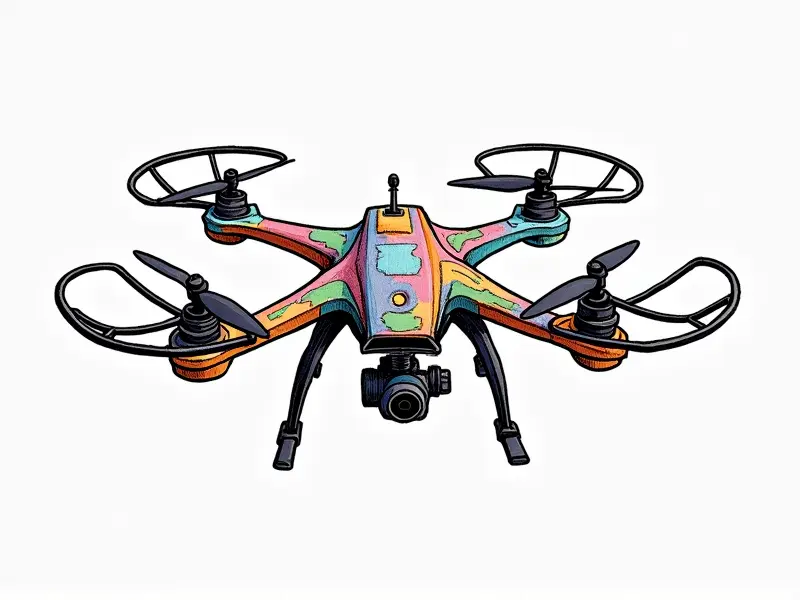How to solder drone components

Essential Soldering Skills for RC Enthusiasts
Soldering is a fundamental skill in the world of radio-controlled (RC) models, including drones. Whether you're building your first drone or upgrading an existing one, mastering soldering techniques can significantly enhance your project's performance and durability.
Understanding Soldering Basics
- Solder: A metal alloy that melts at a relatively low temperature to create strong electrical connections.
- Soldering Iron: The tool used for heating the solder and applying it to components.
- Desoldering Braid/Wick: Used to remove excess solder or fix mistakes.
Essential Tools for Soldering Drone Components
- Soldering iron with temperature control
- Solder flux pen or paste
- Vacuum desoldering pump
- Multimeter to test connections
- Heat shrink tubing for insulation
Ultimate Guide to Soldering FPV Drone Parts
First-person view (FPV) drones require precise soldering due to their complex electronic components. This section will guide you through the process of soldering FPV drone parts effectively.
Preparation for FPV Drone Assembly
- Clean Components: Ensure all parts are free from dust and oils before soldering.
- Check Compatibility: Verify that the components are compatible with your drone's specifications.
Soldering FPV Camera and Video Transmitter (VTX)
The camera and VTX are critical for transmitting real-time video feeds. Follow these steps to solder them correctly:
- Apply a small amount of flux to the connection points.
- Melt a small bead of solder on each pin, ensuring good contact with the component leads.
- Use heat shrink tubing to insulate connections and prevent shorts.
Simplified Guide to Soldering Electronics in Drones
Soldering electronics can be daunting for beginners. This simplified guide breaks down the process into manageable steps, making it easier to understand and execute.
Basic Steps for Soldering Drone Components
- Clean the Surface: Use a soldering iron cleaner or brass brush to remove any oxidation.
- Add Flux: Apply flux pen or paste to ensure better wetting of solder on metal surfaces.
- Melt Solder: Heat the joint and apply solder simultaneously. Remove heat once the solder flows smoothly.
Tips for Perfect Drone Wiring Solder Joints
A well-soldered connection is crucial for reliable drone performance. Here are some tips to achieve perfect joints every time:
Inspecting and Testing Connections
- Voltage Check: Use a multimeter to verify continuity between soldered points.
- Visual Inspection: Look for any cold or weak joints that may need rework.
Top Tricks for Efficient Drone Component Soldering
Efficiency is key when working on multiple drone projects. These tricks will help you streamline your soldering process and save time.
Optimizing Your Workspace
- Organized Tools: Keep all necessary tools within easy reach to avoid interruptions.
- Lighting Setup: Ensure adequate lighting for clear visibility of solder joints.
DIY: How to Solder Your Own Drone Components
Building your drone from scratch offers a sense of accomplishment and customization. Here’s how you can do it yourself:
Selecting the Right Parts
- Component Quality: Choose high-quality components to ensure longevity.
- Customization Options: Explore different configurations based on your needs and preferences.
Step-by-Step Drone Soldering Tutorial for Beginners
This tutorial is designed specifically for beginners who are new to soldering drone components. Follow these steps to get started:
Initial Setup
- Gather Materials: Collect all necessary tools and parts.
- Soldering Iron Warm-Up: Preheat your soldering iron to the recommended temperature.
Soldering Process
- Clean component leads with a brass brush.
- Add flux and apply heat to both the lead and pad simultaneously.
- Melt solder onto the joint, ensuring it flows evenly around all surfaces.
- Allow the joint to cool before moving on to the next one.
Simplified Drone Assembly: Soldering Made Easy
Assembling a drone can be simplified by breaking down the process into smaller, manageable tasks. Here’s how you can approach it:
Breaking Down the Process
- Module-by-Module Approach: Focus on one module at a time to avoid confusion.
- Testing Each Module: Test each component individually before integrating into the whole system.
Essential Soldering Skills for RC Drones
Soldering is an essential skill in building and maintaining RC drones. Here are some key skills to master:
Maintaining Equipment
- Regular Cleaning: Keep your soldering iron clean and well-maintained.
- Temperature Control: Adjust the temperature based on the type of components being soldered.
Top Tricks for Soldering Drone Hardware
Here are some additional tricks to enhance your soldering skills and improve efficiency when working with drone hardware:
Using Helping Hands
- Stabilization: Use a helping hands tool or similar device to hold components in place.
- Increased Precision: This allows for more precise soldering, especially on small parts.
Tips for Perfect Drone Wiring Soldering
To ensure your drone operates flawlessly, follow these tips for perfect wiring solder joints:
Avoiding Common Mistakes
- Overheating: Avoid overheating components which can damage them.
- Cold Joints: Ensure that solder flows smoothly without any gaps or voids.
Conclusion
Mastery of soldering techniques is crucial for anyone involved in building and maintaining RC drones. By following these tips, tricks, and tutorials, you can improve your skills and ensure reliable performance from your drone projects.

